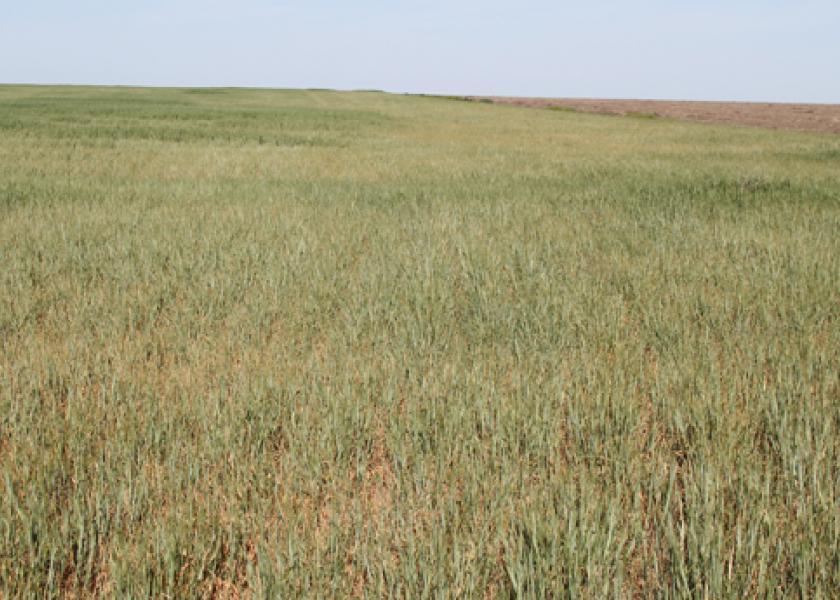Hungry Cattle Help OSU Researchers Discover Drought Resistant Wheat

Thanks to drought, many in the Oklahoma Panhandle and elsewhere in the Midwest struggle to squeeze production out of the dry, hard dirt. A group of researchers, with the help of hungry cattle, has found a solution: a wheat variety that stands up to drought.
“In Oklahoma we put a lot of emphasis on cattle, so we put cattle and wheat together,” says Brett Carver, regents professor and wheat breeder at Oklahoma State University. “Grazing plus grain. We’ve used that selection environment for 18 years.”
To mimic real-world application and to speed up testing results, Carver and his team use cattle to generate experimental lines of wheat varieties. They plant a large plot with thousands of wheat plants, allow them to grow to a certain stage and let cattle graze there. The grazing forces the plants into a high stress, drought-like scenario where the strongest survive, or, in the case of this new variety, thrive.
From there, the team looks at the progeny of each wheat plant and determines which withstood stress better and is producing more grain. Those plants become the parents for the lines the university produces. Using traditional breeding methods, researchers pair parents who complement each other well in hopes of maximizing yield potential. This breeding process created Bentley, a drought- and temperature-tolerant wheat variety from OSU.
“The new wheat variety Bentley is touted for its ability to thrive in tough conditions,” Carver explains. “Under drought, this excels, and when we have late or early freezes, this one responds and recovers well.”
Carver and his team have been testing Bentley for seven years, about twice as long as normal. “We made sure we had the data before the release in 2015,” Carver says.
Additional years of testing allowed researchers to establish a strong seed bank and provide more consistent yield expectations for seed producers and farmers. Under typical conditions, OSU would provide 2,000 to 3,000 bushels for the seed company in which they licensed the variety. Thanks to extra testing, they had 7,000 to 8,000 bushels to provide.
It’s a good thing they had extra production, because it’s likely this variety will be highly attractive to growers. Compared to Gallagher, which is currently the industry-leading wheat variety in Oklahoma, Bentley averages 2 bu. per acre higher across a wide range of conditions.
This could be even higher under stressful conditions.
“We actually recommend you don’t put (Bentley) under full irrigation, because the yield increase is not justified by excessive applications of water,” Carver says. “It really doesn’t need that much water, just at certain times.” Wheat, even drought-resistant Bentley, needs water when it’s using more energy such as emergence, moving into reproductive stages, just before flowering and during mid-grain fill when extremely dry.
But this new variety's drought-resistance could open up new opportunities for farmers while lowering their risk.
“We’re just trying to reduce the risk producers have to face in an erratic climate,” Carver says. “Remember to be patient. It takes 10 years to go from a cross to a final product.”
OSU licensed the Bentley variety through Oklahoma Genetics Inc. (OGI), who will be selling the product to interested farmers in Texas, Oklahoma and Southern Kansas.







